Microsoft Defender Extended Detection and Response (XDR) — Unified investigation and response experience
If you work in a corporation, there is always a question of security. Maybe your CISO sent an email with bullet points asking how different types of data and resources are protected from potential attacks, incidents, and vulnerabilities.
While you are scratching your head — Microsoft came up with a solution that got you covered with one unified pane of glass.
Ranging from different endpoints, emails sent, on-prem and hybrid identities, Microsoft Teams, and SharePoint — all can be covered by Microsoft Defender XDR
Defender XDR Overview & suite
As I mentioned before Defender XDR is a unified defense suite that automatically coordinates detection, prevention, investigation, and response across different workloads, identities, and native and 3rd party SaaS/PaaS solutions.
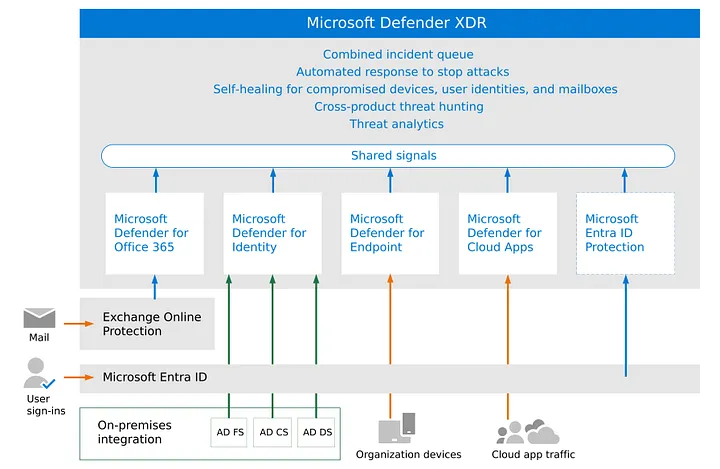 Microsoft Defender XDR architecture — image courtesy of Microsoft
Microsoft Defender XDR architecture — image courtesy of Microsoft
As seen in the picture above Defender XDR is comprised of multiple Defender suites:
Defender for Office 365
Defender for Identity
Defender for Endpoint
Defender for Cloud Apps
Entra ID protection
Each service covers a specific part of security problems and has its own set of Role-Based Access Control (RBAC), and license prerequisites, which I will cover in more detail in the next subchapter.
You can access the Defender XDR portal here by searching security.microsoft.com
Defender for Office 365 (MDO)
Defender for Office 365 is a cloud-based email filtering service that helps protect against threats from advanced email and collaboration tools, such as phishing, business email compromise, and malware attacks. It also provides investigation, hunting, and remediation capabilities to help security teams identify, prioritize, investigate, and respond to threats efficiently.
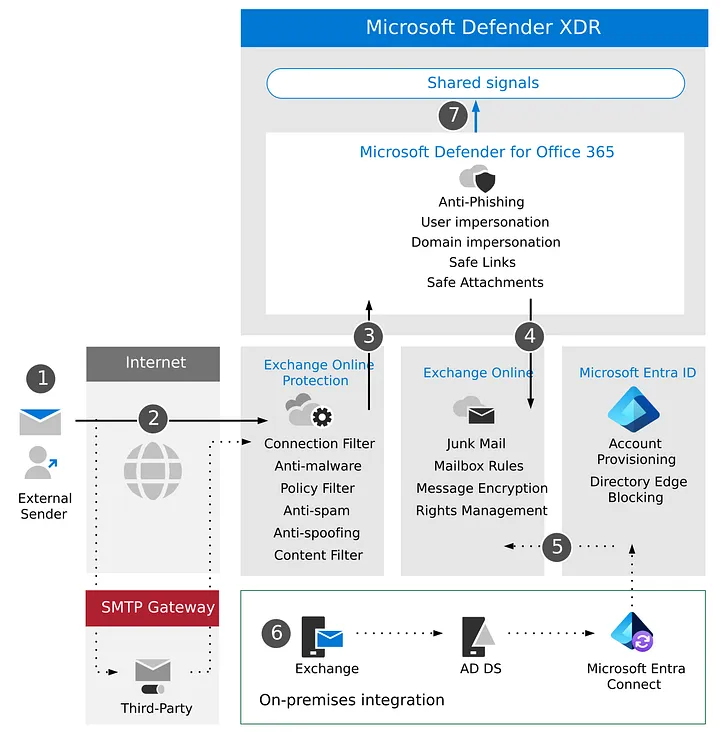 Defender for Office 365 architecture — image courtesy of Microsoft
Defender for Office 365 architecture — image courtesy of Microsoft
The following diagram illustrates the baseline architecture for Office 365, which can also include 3rd party SMTP gateway or on-premise integration
Defender for Identity (MDI)
A cloud-based security solution that helps secure your identity monitoring across your organization be it on-prem or hybrid identities
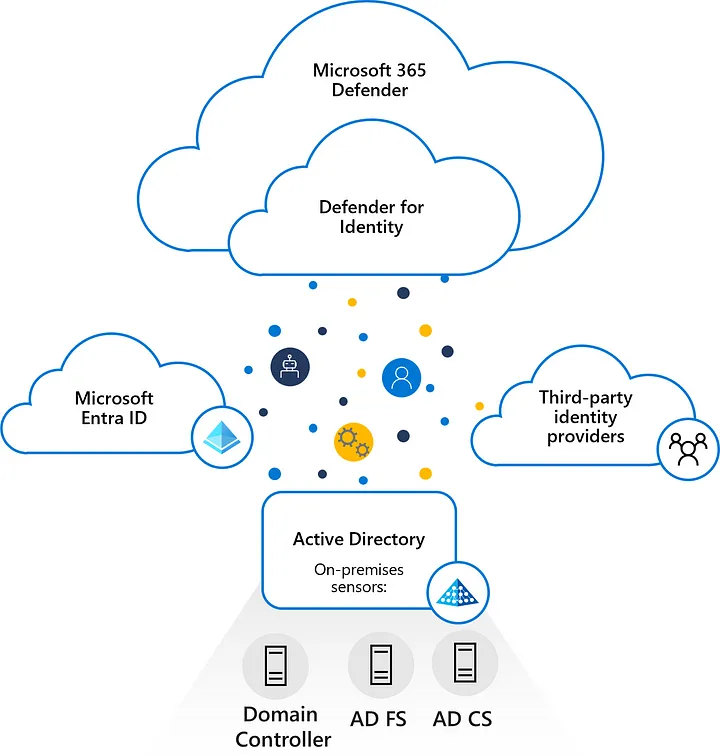 Defender for Identity architecture — image courtesy of Microsoft
Defender for Identity architecture — image courtesy of Microsoft
It monitors domain controllers by capturing and parsing network traffic, leveraging Windows events directly from domain controllers.
Installed directly on your domain controller, Active Directory Federation Services (AD FS), or Active Directory Certificate Services (AD CS) servers, the Defender for Identity sensor accesses the event logs it requires directly from the servers.
Defender for Endpoint (MDE)
It is an enterprise endpoint security platform designed to secure endpoints and prevent, detect, investigate, and respond to threats.
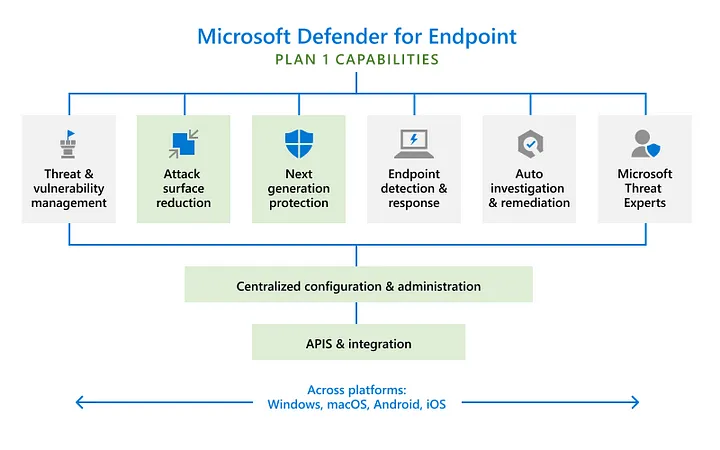 Defender for Endpoint architecture — image courtesy of Microsoft
Defender for Endpoint architecture — image courtesy of Microsoft
Examples of endpoints protected by Defender for Endpoint include — laptops, phones, PCs, tablets, access points, routers, and firewalls
Devices can be onboarded with MDE by multiple deployment methods:
Local script (up to 10 devices)
Group Policy
Microsoft Endpoint Configuration Manager
System Center Configuration Manager
Mobile Device Management (MDM) or Microsoft Intune
VDI onboarding scripts for non-persistent devices
The preferred method of deployment can be selected from the Defender portal (security.microsoft.com) under Settings — Device Management — Onboarding
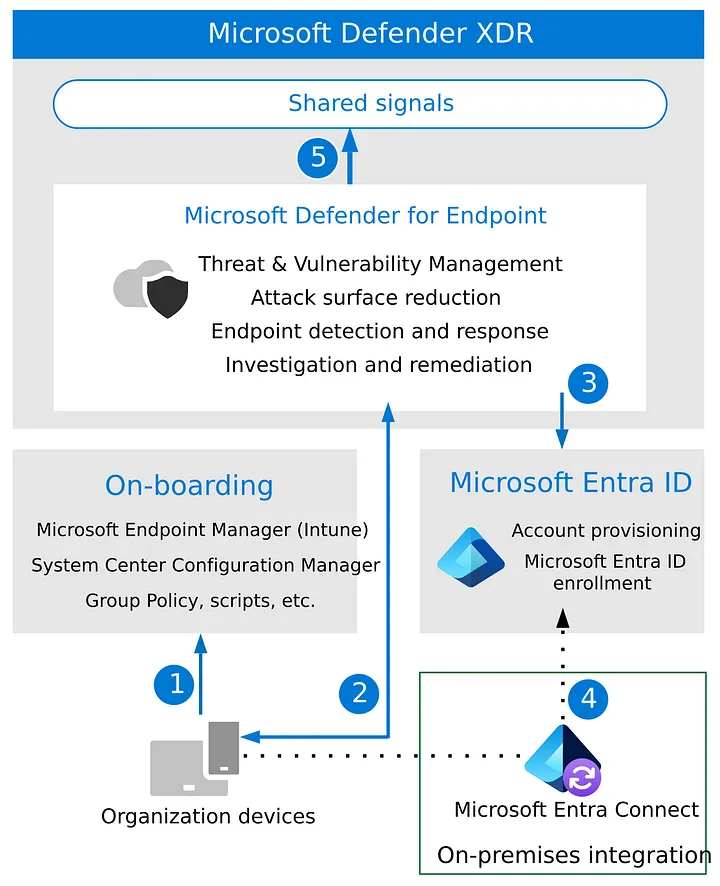 Defender for Endpoint sample architecture & integration — image courtesy of Microsoft
Defender for Endpoint sample architecture & integration — image courtesy of Microsoft
Defender for Cloud Apps (MDA)
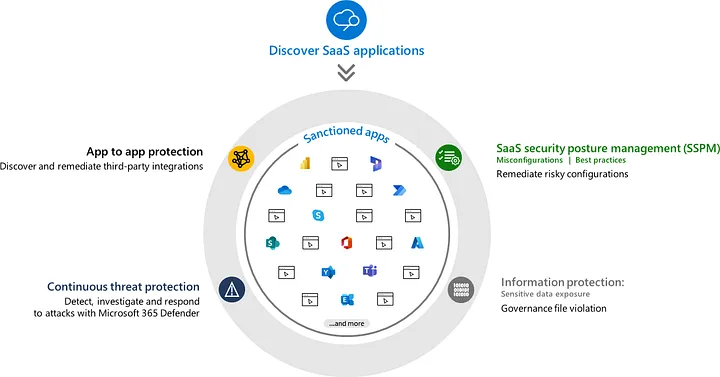 Defender for Cloud Apps Overview — image courtesy of Microsoft
Defender for Cloud Apps Overview — image courtesy of Microsoft
Helps monitor and protect cloud app data across the following feature areas:
Fundamental cloud access security broker (CASB) — functionality, such as Shadow IT discovery, visibility into cloud app usage, protection against app-based threats from anywhere in the cloud, and information protection and compliance assessments.
SaaS Security Posture Management (SSPM) — features that enable security teams to improve the organization’s security posture
Advanced threat protection — enables powerful correlation of signal and visibility across the full kill chain of advanced attacks
App-to-app protection — extending the core threat scenarios to OAuth-enabled apps that have permissions and privileges to critical data and resources.
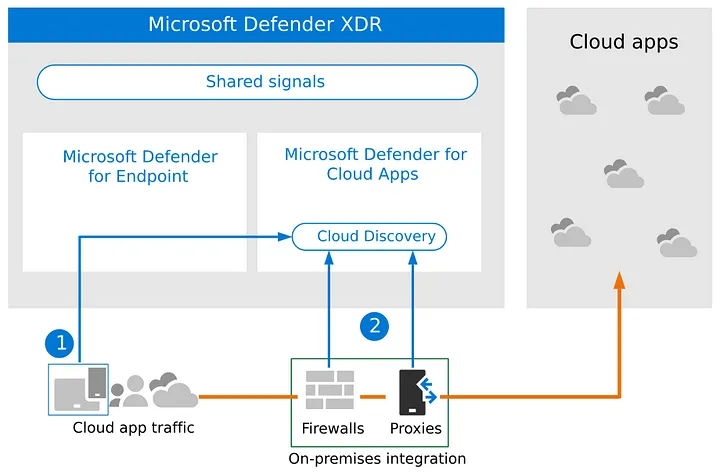 Discovery of Cloud Apps inside organization — image courtesy of Microsoft
Discovery of Cloud Apps inside organization — image courtesy of Microsoft
Many MDA-related configurations can be done from the Defender portal, Settings — Cloud Apps . They range from the App connector’s default behavior to user monitoring and MDE integration.
Entra ID protection
It helps organizations detect, investigate, and remediate Azure cloud identity-based risks. These identity-based risks can be fed into tools like Conditional Access to make access decisions or fed back to a security information and event management (SIEM) tool for further investigation and correlation.
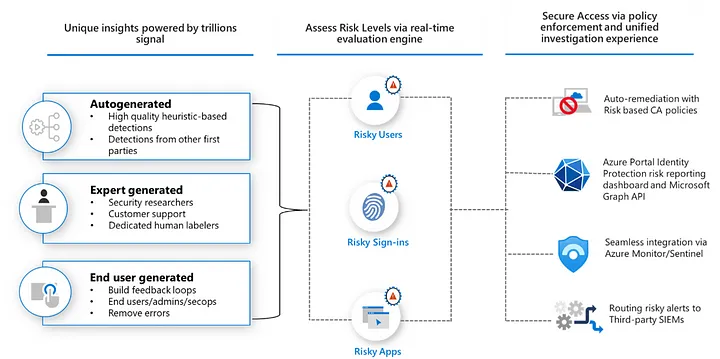 Entra ID protection architecture — image courtesy of Microsoft
Entra ID protection architecture — image courtesy of Microsoft
Entra ID protection emphasizes using Conditional access, User risk, Sign-in risk, and Multifactor authentication registration policies for detection and response to threats to the users and organization.
Remediations for those risks can be either automatic (Conditional access policies) or manual remediations (by manually reviewing user reports in the portal)
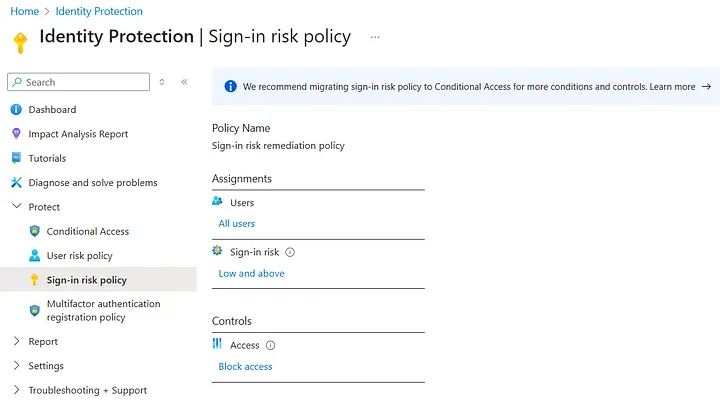 Entra Identity Protection (ID) Sign-in risk policy setup
Entra Identity Protection (ID) Sign-in risk policy setup
Licenses & RBAC prerequisites
Related to licensing — any Defenders on Defender XDR can be used separately (you don’t need all the licenses if you don’t plan to use Defender for Identity for example). Nevertheless here is the list of all the licenses that give you proper access across the Defender suite:
Microsoft 365 E5 or A5
Microsoft 365 E3 with the Microsoft 365 E5 Security add-on
Microsoft 365 E3 with the Enterprise Mobility + Security E5 add-on
Microsoft 365 A3 with the Microsoft 365 A5 Security add-on
Windows 10 Enterprise E5 or A5
Windows 11 Enterprise E5 or A5
Enterprise Mobility + Security (EMS) E5 or A5
Office 365 E5 or A5
Microsoft Defender for Endpoint
Microsoft Defender for Identity
Microsoft Defender for Cloud Apps or Cloud App Discovery
Microsoft Defender for Office 365 (Plan 2)
Microsoft 365 Business Premium
Microsoft Defender for Business
Related to RBAC roles Security Administrator role is required in Microsoft Entra ID to turn on Microsoft Defender XDR!
There are two ways to manage access to Microsoft Defender XDR:
Global Microsoft Entra Roles (Global Administrator, Security Administrator, Security Operator, Global Reader, Security Reader)
Custom Role Access — offers more control than global Microsoft Entra roles, providing users only with the access they need with the least permissive roles.
Microsoft Defender XDR pilot deployment & best practices
Microsoft recommends deployment of Defender XDR components based on the easiest configuration and quick wins (but it should be adapted to organizational needs)
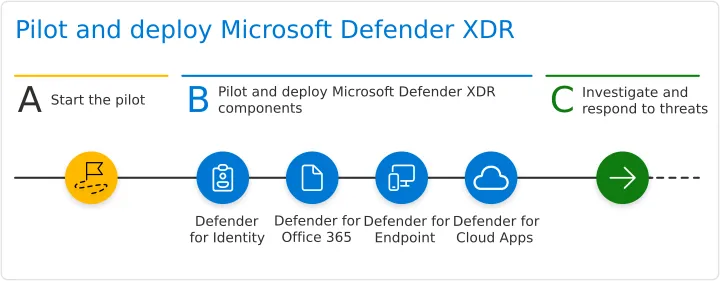 Proposed Microsoft Defender XDR deployment of components — image courtesy of Microsoft
Proposed Microsoft Defender XDR deployment of components — image courtesy of Microsoft
For example, Defender for Identity deployment takes less time to deploy than Defender for Endpoint.
If you wish to stick to the Microsoft proposal of Pilot Deployment here is the link to the documentation and steps - How do I pilot and deploy Microsoft Defender XDR?
Useful stuff
Here is the list of useful docs and training that I would highly recommend:
Conclusion
In this article, we’ve talked about Defender components, licensing, roles required, and also some pilot deployment recommendations.
In the next one, I will be writing about Defender XDR integration with Microsoft Sentinel, Defender for Cloud and Copilot for Security
As well as here in our Cyberdnevnik publication.
All the best in this New Year,
Vedran.
